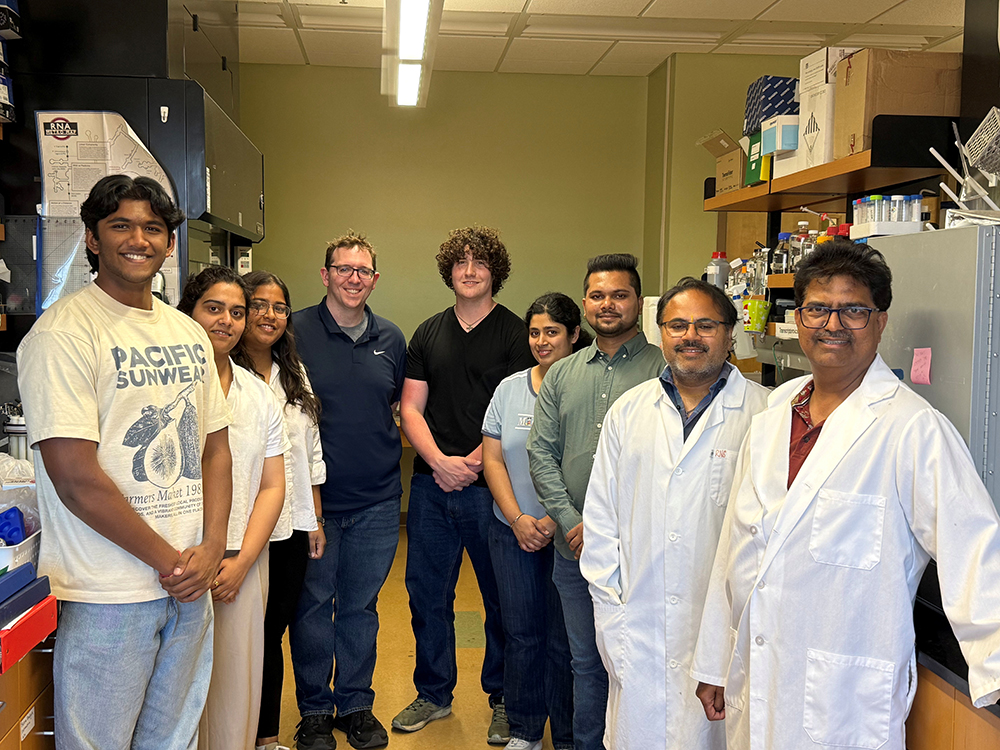Pyramid Approach at South Dakota Mines Builds Living Chain of Mentorship

For more than a decade, Rajesh Sani has been proving that connecting learners at various stages creates a powerful chain of mentorship and discovery, building a skilled, multidisciplinary workforce to advance cutting-edge biotechnology research.
This summer, Sani, Ph.D., a South Dakota Mines professor in the Karen M. Swindler Department of Chemical and Biological Engineering and Department of Chemistry, Biology and Health Sciences, continued to bring his Pyramid Approach to the forefront uniting high school students,
undergraduates, graduate students, postdoctoral researchers and faculty together in
a shared mission, each level teaching the next while delivering impactful scientific
results.
“The Pyramid Approach connects learners at every stage, from high school students to postdocs, in a structured, hands-on research environment,” said Sani, who heads up the Multiomics And Synthetic Biology Center (MASON) Lab on campus. “It accelerates technical skills, fosters mentorship and inspires scientific curiosity, building a pipeline of talent ready to tackle science and engineering's toughest challenges.”
Sani, at the pyramid’s top, mentors postdocs and doctoral students who guide undergraduates who then mentor high school students. “This creates a vibrant cascade of skills, knowledge and innovation that energizes every level of the scientific journey,” Sani said. “The Pyramid Approach shows that layered mentorship not only trains the next generation but also accelerates real discoveries. It's proof that teaching and research together can deliver both talent and tangible results.”
High school sophomore Krishna Deepak from Franklin, Tenn., got a taste of real lab work with the guidance of undergraduate interns Anjali Thapliyal and Nishka Kanodiya from Shoolini University in India, and Nathan Strickland, a Mines biomedical engineering major. Thapliyal and Kanodiya spent months mastering advanced biotech skills under Mines research scientist Dipayan Samanta, Ph.D., while Strickland designed nanogels for biomedical use. University of North Dakota undergraduate Emmanuel Duot learned microbiology and biotechnology techniques under Mines doctoral student Navdeep Kaur.
Even local science teacher Dylan Steffen trained with Ram Singh, Ph.D., Mines postdoctoral research scientist, in lab techniques like soil sampling, bacterial isolation and DNA extraction that he can bring back to his classroom at Rapid City Stevens High School.
“This summer's collaboration will yield three peer-reviewed research papers and three book chapters proving that the Pyramid Approach produces not just learning, but tangible scientific contributions,” Sani said.
The group took science to the public, hosting interactive exhibits at Earth Day and Neutrino Day, including a hands-on activity, Burst the Bacteria, led by Singh which gave youth a close-up look at the role bacteria play in biofilms and bacteriophage interactions.
Through mentorship, collaboration and hands-on research, the Pyramid Approach is building a new generation of scientists who are skilled, connected and ready to make an impact.
“It stands as a model for how structured, layered training can prepare the next generation to lead in science and engineering,” Sani said. “It demonstrates how mentorship can ripple outward, inspiring future scientists while strengthening classrooms and communities.”